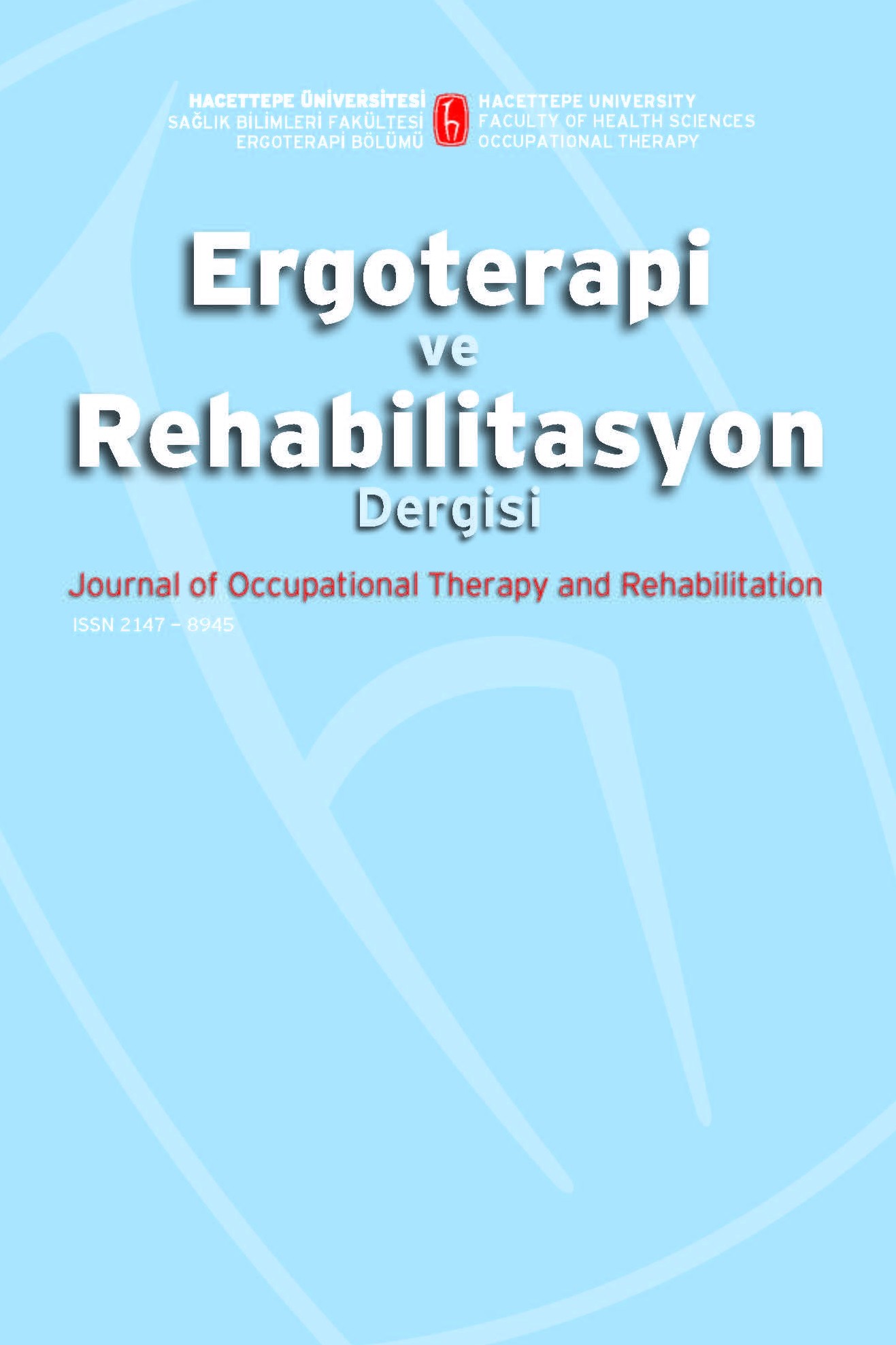Parkinson Hastalarında Duyu Bütünlüğü Eğitiminin Postüral İnstabiliteye Etkisi
Amaç: Bu çalışma duyu bütünlüğü eğitiminin Parkinson hastalarında postüral instabilite üzerine olan etkilerini incelemek amacıyla yapıldı. Gereç ve yöntem: Bu amaçla Modifiye Hoehn &Yahr Evreleme Ölçeğine göre evre 2-3 arasında olan 20 Parkinson hastası kontrol ve çalışma grubu olmak üzere ikiye ayrıldı. Kontrol grubuna genel fizyoterapi, çalışma grubuna ise genel fizyoretapi ile kombine edilmiş duyu bütünlüğü eğitimi 6 hafta boyunca haftada 2 kez olacak şekilde uygulandı. Hastalar Birleşik Parkinson Hastalığı Derecelendirme Ölçeği (BPHDÖ), Loewenstein Occupational Therapy Cognitive Assessment (LOTCA), Tandem pozisyonunda durma (TPD), Fonsiyonel Uzanma Testi (FUT), Zamanlı Kalk Yürü Testi (ZKYT), Berg Denge Ölçeği (BDÖ) ve SF36 yaşam kalitesi ölçeği ile değerlendirildi. Sonuç: Çalışma ve kontrol grubunda BPHDÖ, LOTCA ve denge değerlendirilmesinde kullanılan bütün testlerde gelişme olduğu (p<0.05) SF 36 puanlarının ise değişmediği (p>0.05) görüldü. Çalışma grubunda postüral kontrolün kontrol grubuna göre daha fazla geliştiği belirlendi (p<0.05). Tartışma: Kombine tedavi statik ve dinamik postüral kontrolün sağlanması için ihtiyaç duyulan duyusal süreçlerin gelişimine önemli katkıda bulunarak postüral kontrolü daha iyi geliştirdi. Bu nedenle postüral instabilitesi belirgin hastalarda tedavi programına duyu bütünlüğü eğitiminin de dahil edilmesinin gerekli olduğu düşünülmektedir
The Effects of Sensory Integration Training on Postural Intability in Parkinson’s Patients
Purpose: This study was carried out to determine the effects of sensory integration training on postural instability in Parkinson patients. Material and Methods: For this purpose, 20 Parkinson patients at stage 2-3 according to Modified Hoehn & Yahr Rating Scale divided into two groups as control and study group. The control group received general physical therapy; the study group received sensory integration training combined with general physical therapy 2 times per week for 6 weeks. Patients were assessed with Unified Parkinson Disease Rating Scale (UPDRS), Loewenstein Occupational Therapy Cognitive Assessment (LOTCA), tandem position (STP), Functional Reach Test (FRT), Time Up and Go Test (TUG), Berg Balance Scale (BBS), and SF 36 health survey. Results: It was observed that there were statistically significant improvements in UPDRS, LOTCA and all balance tests (p<0.05) while SF 36 scores did not change (p>0.05). Postural control of the study group was improved more than the control group (p<0.05). Discussion: Combined treatment contributed importantly the development of the sensory processes required to ensure static and dynamic postural control and developed postural control better. Therefore, we think the treatment programs of the patients with explicit postural instability should include sensory integration training
